Heysen Sculpture Biennial stirs the possums at Carrick Hill
Invited to respond to the theme Political Climate, more than 20 artists have created a diverse collection of work sited in semi-bushland behind the historic home at Carrick Hill. John Neylon highlights some of the most impressive sculptures in the 2022 Heysen Sculpture Biennial.

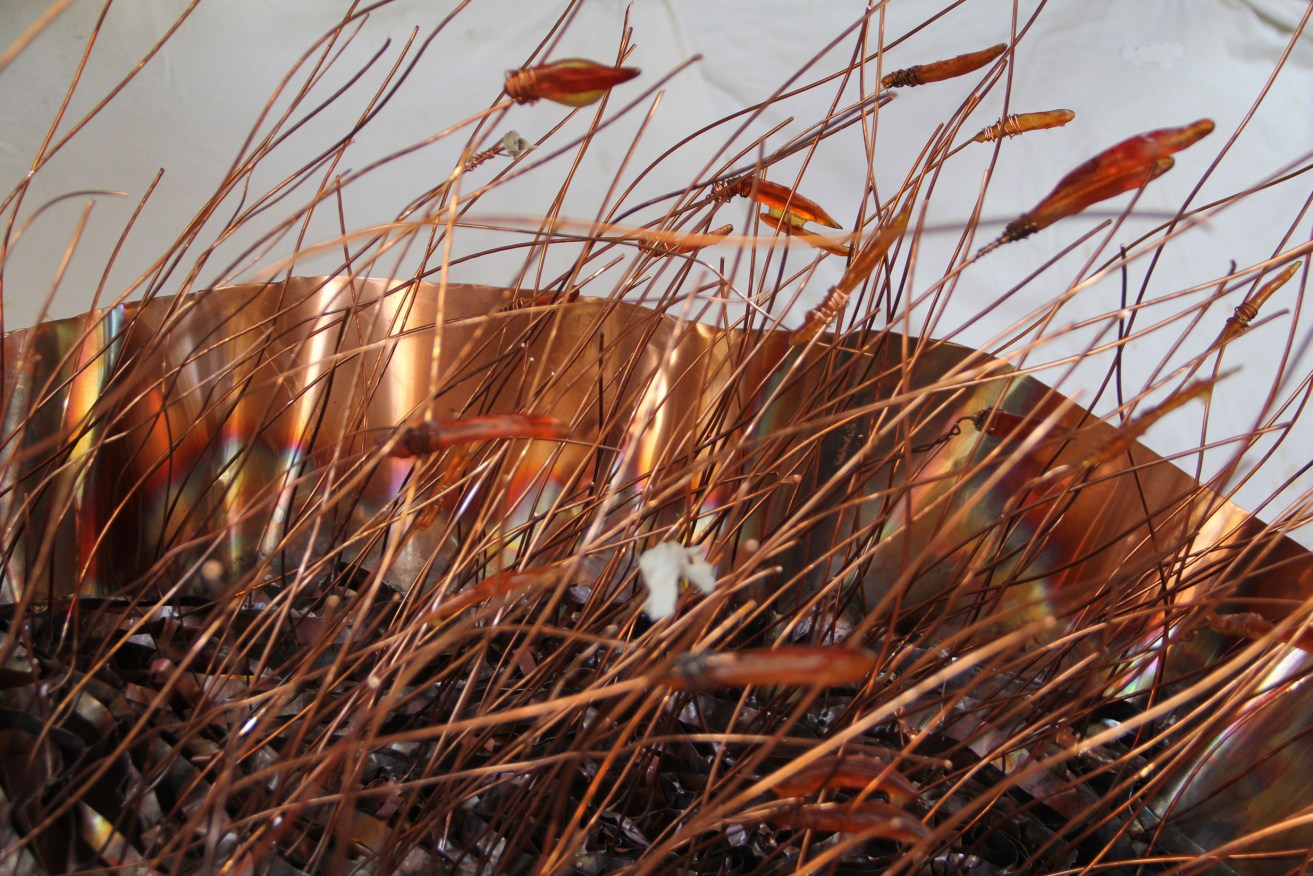
Deborah Sleeman's 'Firestorm in the Mallee' uses braised copper to summon the spirit of fire.
Since the 2000s, two South Australian sculpture projects – Palmer Sculpture Biennial (from 2004) and the Heysen Sculpture Biennial (from 2000) – have exemplified and promoted out-of-gallery, site-specific approaches to making art.
The nine previous Heysen Sculpture Biennials (HSBs) have all been staged at The Cedars in Hahndorf. Due to current building operations at The Cedars, the 2022 exhibition is being presented at Carrick Hill, which, appropriately enough, was once touted as a site for a sculpture park. It has been curated by Leah Grace and has a theme: Political Climate.
Artists were asked to address issues that currently define the changing political, social and environmental climate of the world we live in. The catalogue essay, co-written by Leah Grace and Michelle Cain Murray, identifies a long list of aspects – including Black Lives Matter, MeToo, and Climate Action – to frame questions about artists’ responsibilities in confronting such matters.
Pity the artists. As if it isn’t hard enough trying to make something that doesn’t fall over, spike someone in the eye or look plain silly.
Twenty-two artists were selected, and the works are sited in semi-bushland on the slope behind the house. It’s a good choice of terrain, offering multiple sites for a very diverse collection of work. That said, there is a difference between artists working within well-rehearsed spaces at The Cedars (Heysen’s studio surrounds, a choice of valleys, Shady Pool and the like) and artists at the Carrick site largely occupying a string of positions running up to Oakey’s dramatically honoured giant gum tree facing down Carrick Hill, the building, at the opposing end of an avenue of trees.
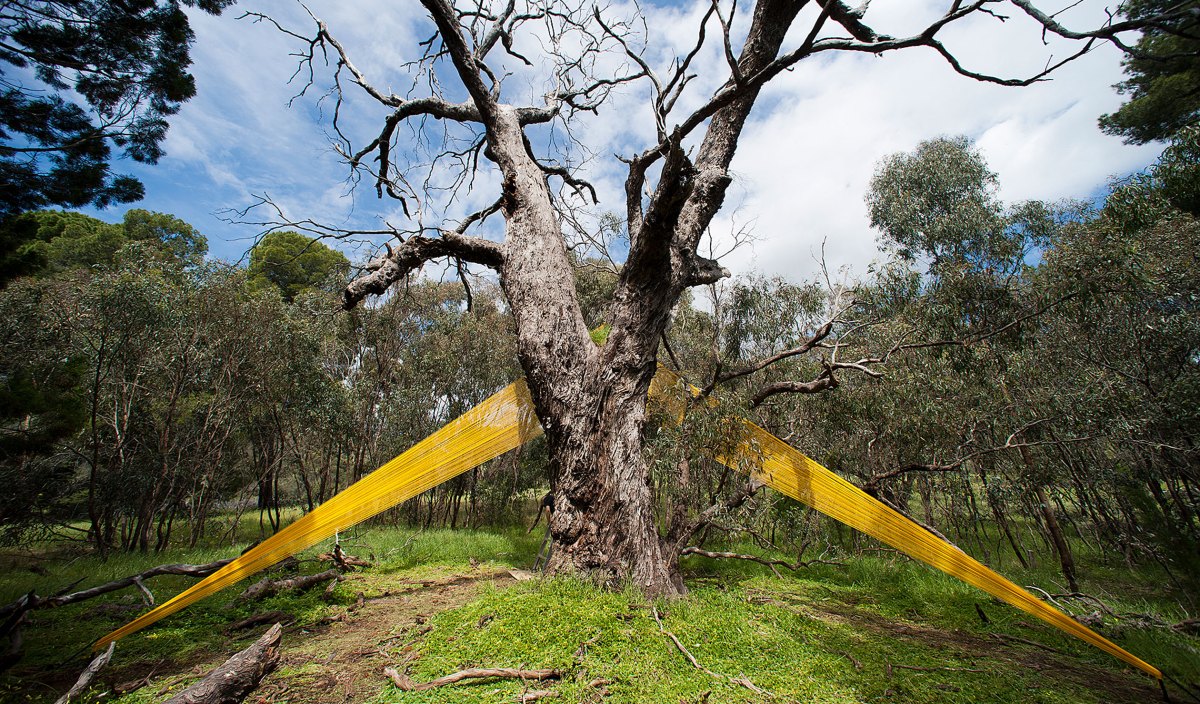
Oakey, Reverence; steel, wool, paint.
Was there a whiff of politics in this gesture? Oddly enough, there appears to be no referencing in the exhibition line-up of Carrick Hill itself, given its English-manor-house style, imported antique oak panelling and the like, and formal gardens where bushland once stood. The entire construct, house and gardens, is stamped onto the slopes overlooking Adelaide, like a brand, or an oak-panelled jackboot. Then again, the Port River dolphins or threatened mangrove reserves didn’t get mentioned, either.
As with most open-invitation exhibition projects, the final assembly ranges from competent and sometimes exceptional works which demonstrate inventiveness in interpreting concepts, to those that have fallen down a rabbit hole of enticing possibilities in search of a killer motif.
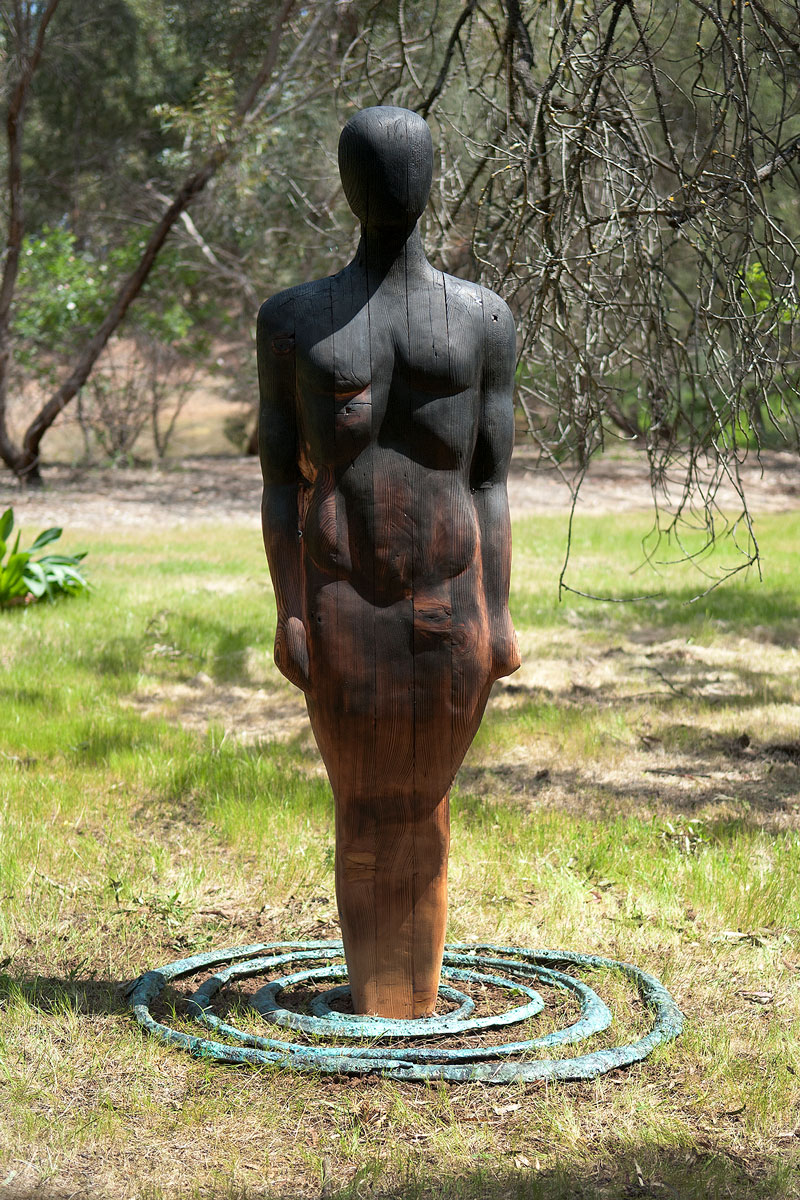
Clancy Warner, Not Waving, (but) Drowning; re-claimed Oregon timber and bronze.
Works by Nicholas Uhlmann (Horrorboros), Quentin Gore (Empty Words), Deborah Sleeman (Firestorm in the Mallee), Clancy Warner (Not Waving, (but) Drowning), Greg Johns (Swaying Whisperers (Songs of The)) and Jane Skeer (Snakes and Ladders) are stamped with the confidence and purpose of hard-won studio experience.
Sleeman’s inverted female form with flaring skirt, for example, is a motif the artist has refined across an extended body of work. In this work, the artist has allowed the materiality of braised copper to summon the spirit of fire licking though stands of mallee.
Warner’s hieratic wooden figures have been a distinctive presence in previous Palmer Biennials. In the softer, confined locale of Carrick’s backyard, her single figure, scorched by an unknown force, reads as intruder or ancestral reminder which contradicts the bland assumptions of ownership, privilege and taste represented by the Carrick pile down the hill.
Johns has been working Australian grasslands as a motif for many years. This line of investigation has been enriched by a parallel development of the Returning Figure motif whose head becomes seedlike as it plunges back into the ground. This latest iteration conveys an intensified engagement with the micro structure and beauty of native grasses as something to marvel at and protect.
Skeer has continued to insinuate a complexity of messaging into her assemblages of industrial detritus. The pre-loved hubcaps of Snakes and Ladders, coiled like a massive snake, speak to the artist of a fast-paced current political climate. The coils writhing through and around a couple of industrial ladders suggested a Laocoon and His Sons-like futile struggle against a fate the universe has in store. Skeer may have unwittingly stumbled on a visual metaphor for our times.
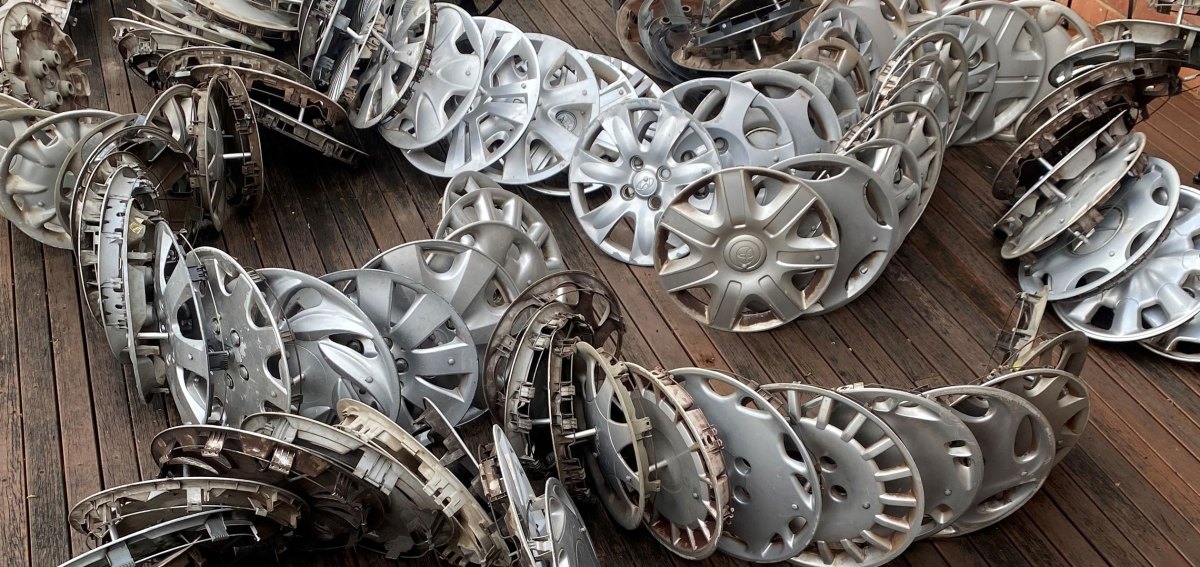
Jane Skeer, Snakes and Ladders; found hubcaps, ladders, aluminium, and galvanised steel.
Uhlmann’s bold motif of a snake biting its own tail is derived from a large body of work in which the artist has interwoven serpent, eagle and boat motifs to create enigmatic, hybrid forms that suggest co-existence of life and death. The artist’s constant reworking of these visual motifs and configurations has enabled him to envisage and create distinctive works that speak to atavistic impulses in our imaginations.
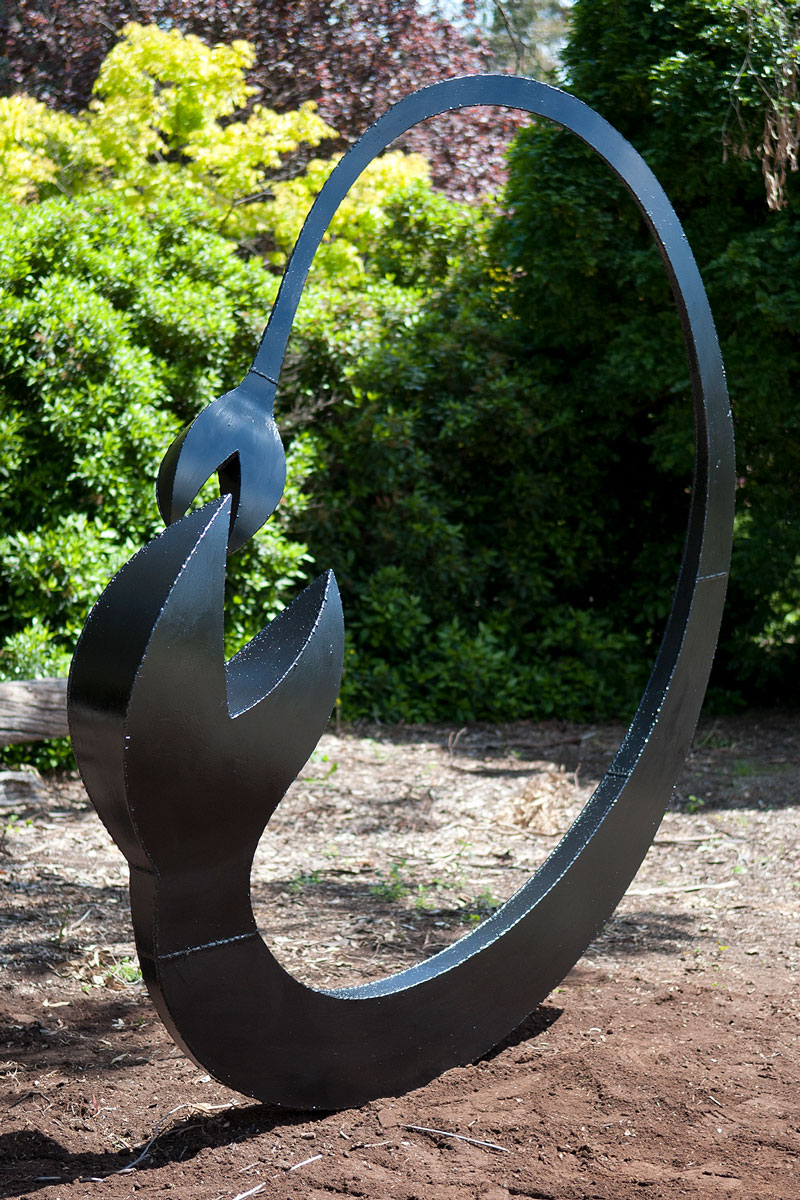
Nicholas Uhlmann, Horrorboros; stainless steel, black paint.
This is a very polite exhibition, muffled in its messaging by earnest entreaties to meander to the barricades and shake a fist at Bad Things. Asking a single work (as opposed to an in-gallery installation) to represent a feeling or state of affairs is devilishly difficult.
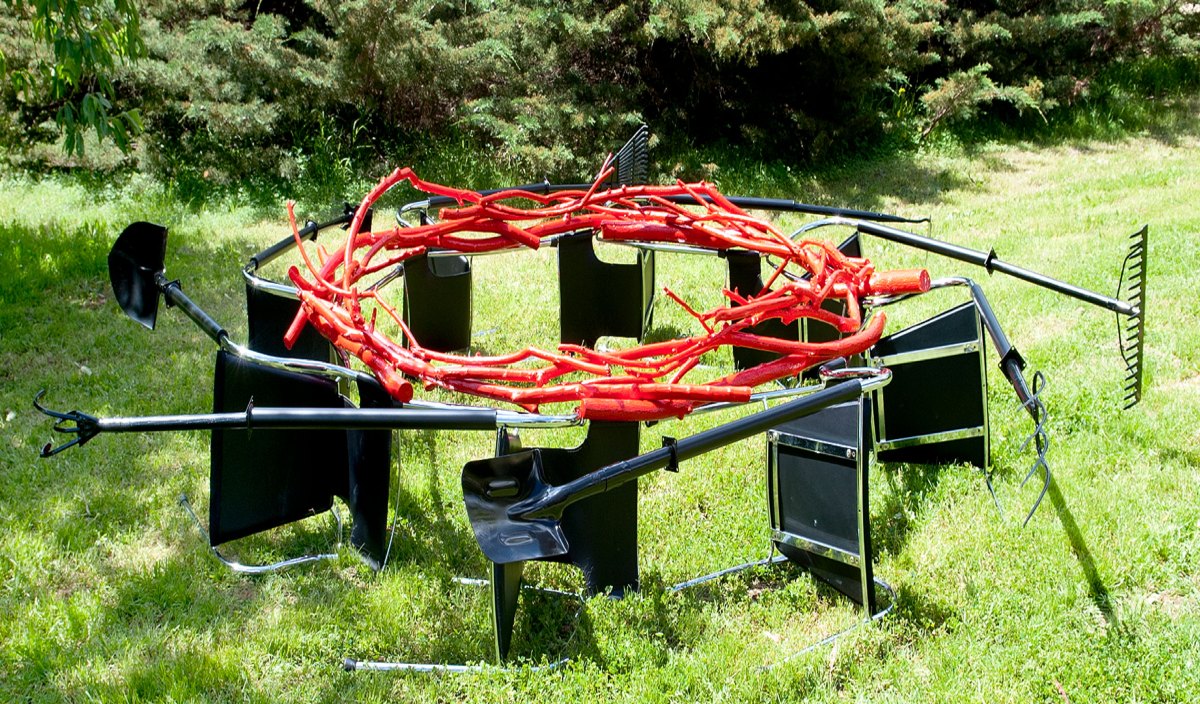
Sonali Patel, Musical Chairs; 8 steel and Rexene found chairs, branches, enamel paint, 8 metal chair legs, 3-prong cultivator, swan-neck hoe, manure fork, 18-tine landscaper’s rake, plastic rake, garden fork, round-mouth shovel, combination rake/hoe.
Political Climate deserves a Mark 2 repeat, as there are facets in a number of works which could find a stronger, more abrasive voice with further working. I’m thinking of the visual punning in Lindy Sando and Vaughn Taylor’s infinity ball in a glass stack, the creepy malevolence of Samuel Mulcahy’s mutant plant (Tetnesteii Caldaria magna immaculata), the Wills Projects’ tightly edited dissing of the home garden (Weeds Weeding), the schematic cool of Tom Borgas’s cypher (Geological Armature (Prelude), David Atkins’ mordant twisting of the Grecian vase’s reassuring symbolism (Die Back) and Sonali Patel’s visually abrasive mashup of conflicting forces (Musical Chairs).
And Karl Meyer’s shotgun-shredded fencing panel, CHANGE! – surely that should have been promoted from the backyard to the front lawns to stir some eastern suburbs possums.
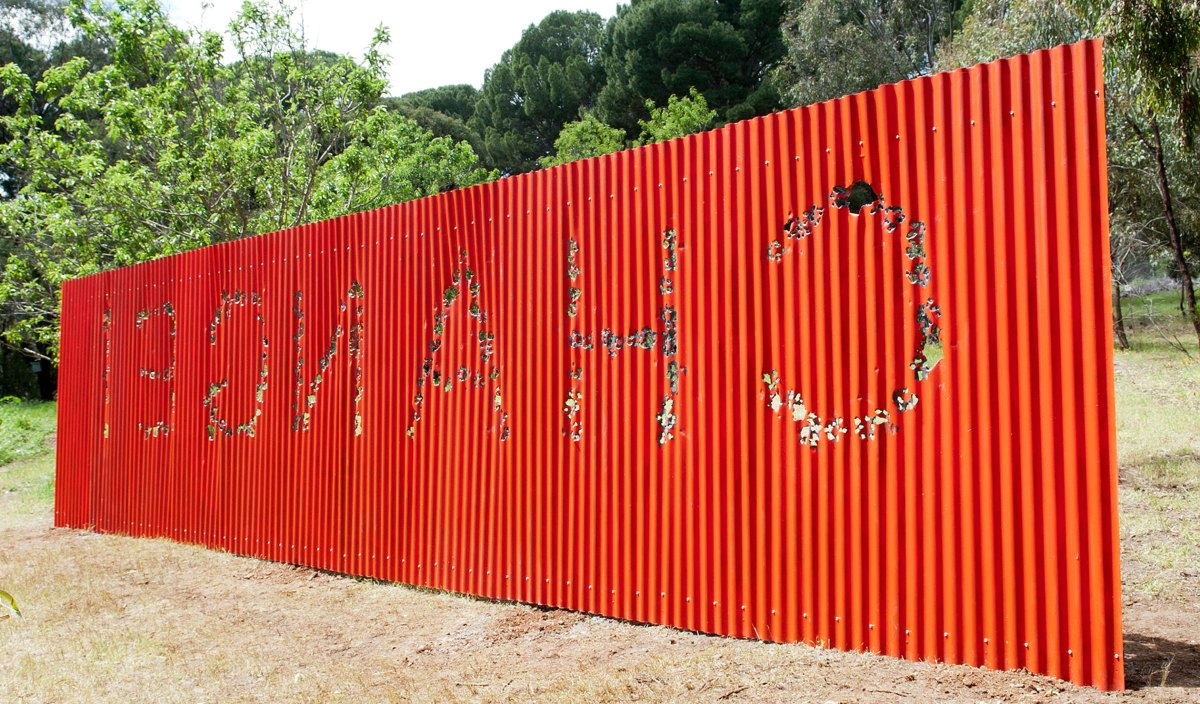
Karl Meyer, Change; Colorbond fencing, paint and shotgun text work.
The Heysen Sculpture Biennial is at Carrick Hill until January 15, 2023.




